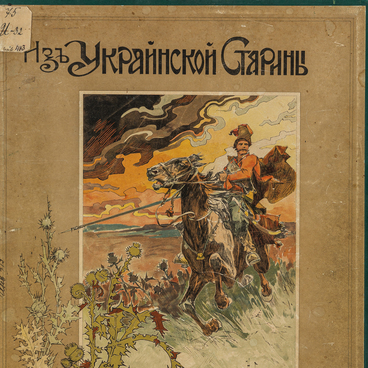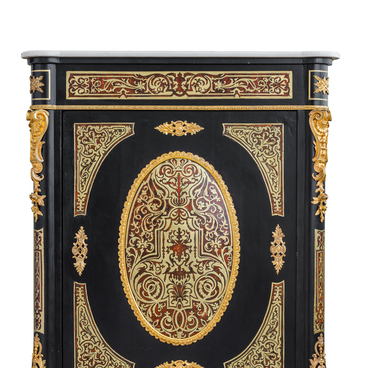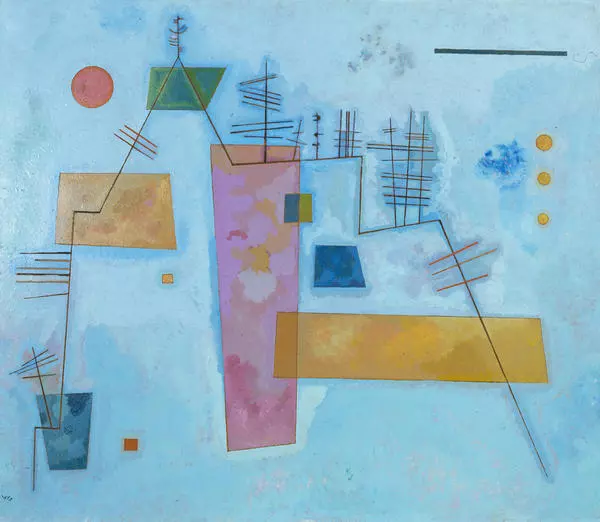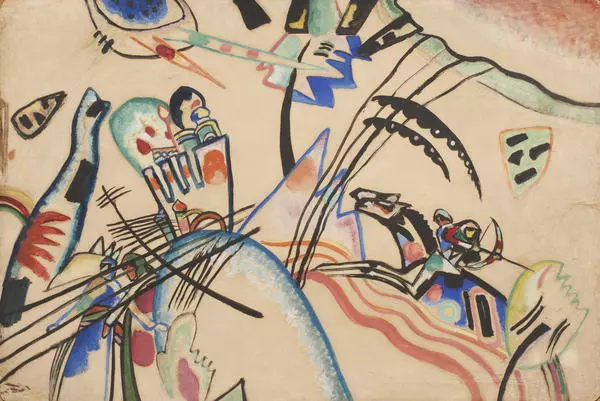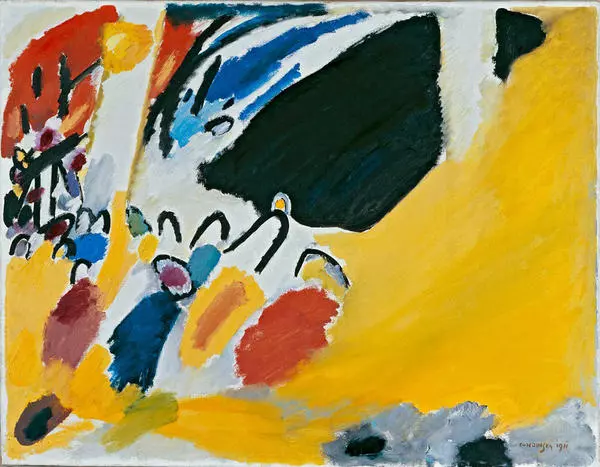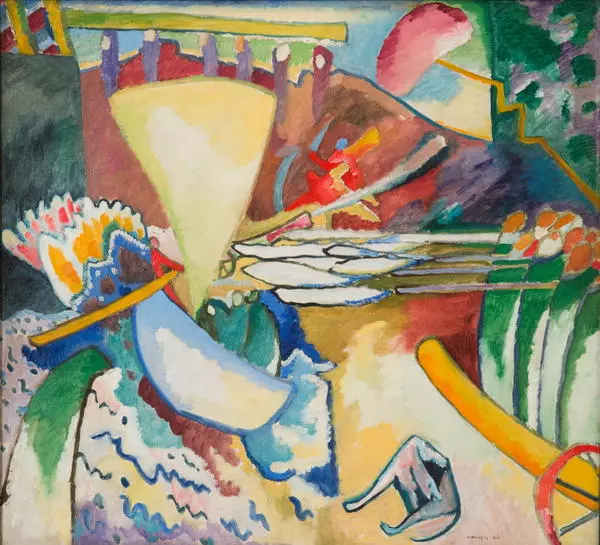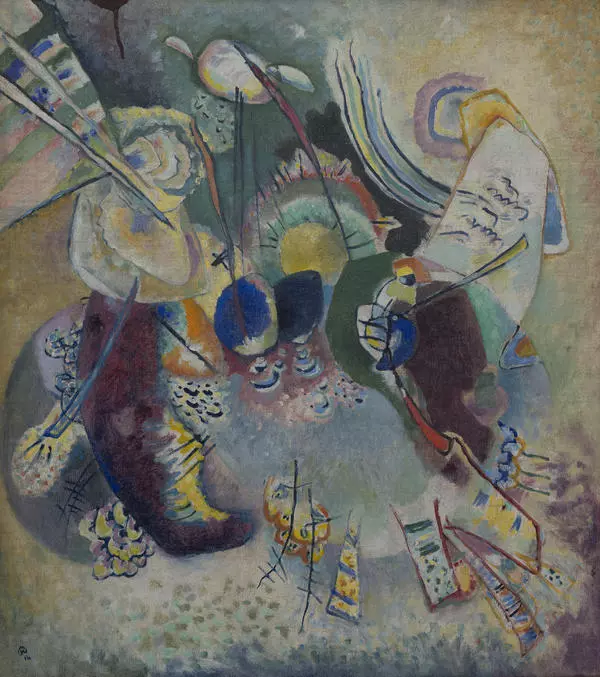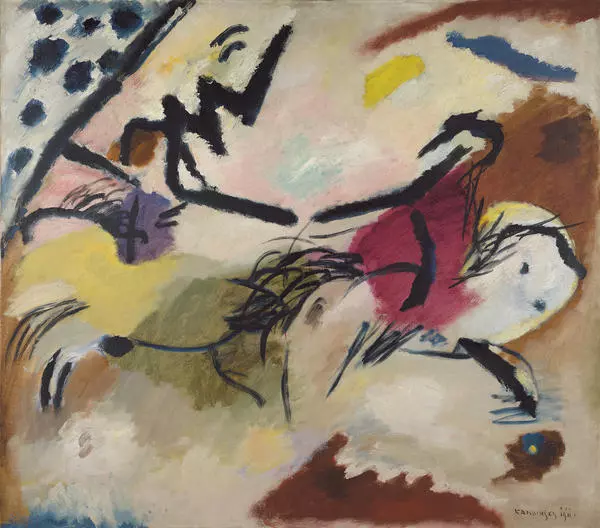Wassily Kandinsky was born on December 16, 1866, in Moscow, into a wealthy businessman’s family. In 1871, the family moved to Odessa, where his father ran his tea factory. There, the future artist learned to play the piano and the cello, and studied drawing with a private teacher. In 1886, Kandinsky left for Moscow, where he entered the Law Faculty of Moscow University.
In 1896, the famous University of Dorpat in Tartu, Estonia, offered a 30-year-old Kandinsky the position of Professor of Law Department, but at that particular time he decided to give up a promising career and devote himself entirely to painting. Kandinsky went to Munich and enrolled at the prestigious private school of the Yugoslavian artist Anton Azbe, where he mastered the image composition and principles of working with line and form.
In 1900, Kandinsky entered the Munich Academy of Arts and studied in the class of Franz von Stuck. The artist traveled across Europe, was engaged in painting and participated in exhibitions. During this period, Kandinsky painted mainly landscapes based on color discords.
In the 1920s, Kandinsky experimented frequently with color. His style changed again: the compositions were based on individual geometric elements, the palette was sated with cold color harmonies, and the circle became a symbol of a perfect form. From 1926 to 1933, the artist painted 159 oils and 300 watercolors. Many of them were lost after the Nazis had declared the paintings of Kandinsky and many other artists to be “degenerate”.
In the 1930s, Kandinsky and his wife emigrated to France, where he lived and worked in solitude, being limited to socialize only with his old friends. At that time, the last transformation of his painting system happened.
The artist painted the picture “Non-Objective” around 1910. During this time, Kandinsky proclaimed non-objectivity to be the main principle of his future work. He left only form and color for expression of content in his works. Thus, Kandinsky interpreted white color as silence, red — as movement and uneasiness, blue — as mystery and mysticism. In the same period, he began to develop the theory of meaningful abstractionism.
In 1896, the famous University of Dorpat in Tartu, Estonia, offered a 30-year-old Kandinsky the position of Professor of Law Department, but at that particular time he decided to give up a promising career and devote himself entirely to painting. Kandinsky went to Munich and enrolled at the prestigious private school of the Yugoslavian artist Anton Azbe, where he mastered the image composition and principles of working with line and form.
In 1900, Kandinsky entered the Munich Academy of Arts and studied in the class of Franz von Stuck. The artist traveled across Europe, was engaged in painting and participated in exhibitions. During this period, Kandinsky painted mainly landscapes based on color discords.
In the 1920s, Kandinsky experimented frequently with color. His style changed again: the compositions were based on individual geometric elements, the palette was sated with cold color harmonies, and the circle became a symbol of a perfect form. From 1926 to 1933, the artist painted 159 oils and 300 watercolors. Many of them were lost after the Nazis had declared the paintings of Kandinsky and many other artists to be “degenerate”.
In the 1930s, Kandinsky and his wife emigrated to France, where he lived and worked in solitude, being limited to socialize only with his old friends. At that time, the last transformation of his painting system happened.
Kandinsky began to work with soft, refined and subtle color nuances, and also complemented and complicated the forms used. New natural elements appeared on the foreground of his works.
The artist painted the picture “Non-Objective” around 1910. During this time, Kandinsky proclaimed non-objectivity to be the main principle of his future work. He left only form and color for expression of content in his works. Thus, Kandinsky interpreted white color as silence, red — as movement and uneasiness, blue — as mystery and mysticism. In the same period, he began to develop the theory of meaningful abstractionism.


